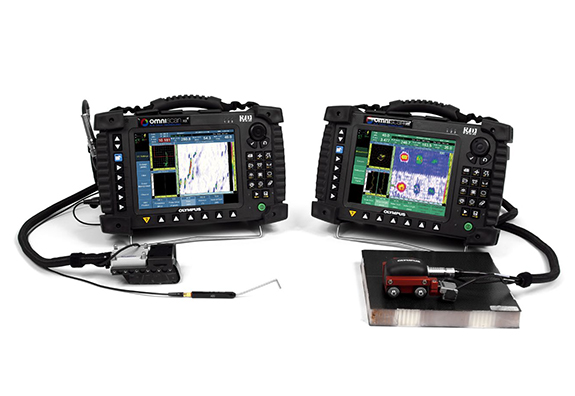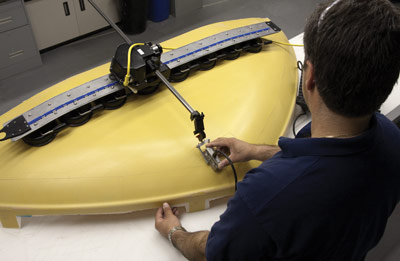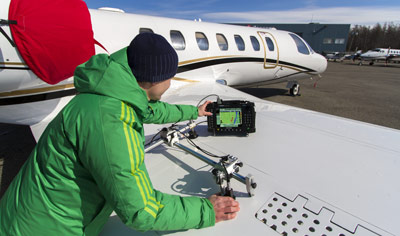OmniScan MX ECA/ECT

Bond Testing Reinvented
Eight Frequencies in the Same Scan
Bond Testing Improvements
- C-scan imagery.
- Can drive up to eight different frequencies at the same time.
- Dimensioning capabilities.
- Improved POD.
- Phase/Amplitude display mode
Important to Note
- Detection similar to that of the BondMaster® 1000e+ instrument, since the same probes are used.
- Designed to support pitch-catch probes.
- Two-axis encoding scanner is required to produce the C-scan.
Advanced Composite Inspection
Olympus is proud to launch our new bond testing OmniScan® solution—a big step forward in the field of composite inspection. Now, easy-to-read C-scan imagery is possible using a portable instrument. This OmniScan solution is ideally suited for disbond detection in honeycomb composite, as well as equally accurate delamination detection. Primarily designed for aerospace in-service inspection, this solution is also useful for the manufacturing sector, including the automotive and naval industries (e.g., for composite boat hulls).
Customers who already own an OmniScan® ECA or ECT module only need to order the standard BondMaster® probes (P14 and SPO-5629) and the BondMaster cable that is required to complete this solution.
Our customized MXB software has been developed especially for composite inspection; new features, such as the wizard and normalization, help to keep operation simple for the user.
Encoded system: any two-axis encoding scanner can be used to inspect a part. Olympus offers two options: the GLIDER™ scanner, which is well-suited for flat or slightly curved surfaces, and the WING™ scanner, which is specially designed for scanning curved parts (e.g., aircraft fuselages) and can even be used upsidedown due to its Venturi vacuum-cup system. For more versatility, a handheld one-axis encoding scanner, equipped with an Indexer Clicker, is also compatible with this system.


Innovative C-Scan Display
Again, Olympus innovates by introducing a new way of displaying on-screen data. For each C-scan, the operator has two viewing options to choose from: the amplitude C-scan displays color variation based on the amplitude of the signal, regardless of the phase, which is ideal for clear and efficient disbond detection; or, the phase C-scan uses a 0° to 360° color palette to display changes in the phase angle, making it easy to distinguish between different types of indications, such as putty (repair) and delamination.